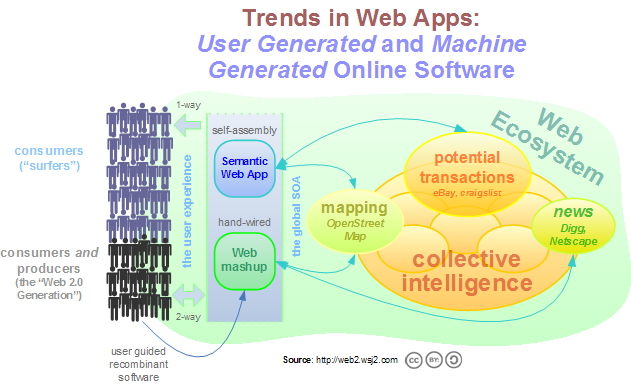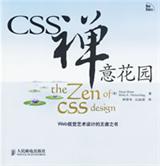Beyond User-Generated Patterns: Web 2.0 and the Semantic Web
I was traveling most of last week, so I didn't experience first-hand the small Web 3.0 stir that John Markoff's exploratory piece in Sunday's New York Times created. His article is premised on the notion that we are finding new ways to mine human intelligence, creating a new layer of "meaning" on the Internet based on the rapidly growing collective global intelligence that contributes to a harvest of human wisdom daily. Collective intelligence is an important component of Web 2.0; the name itself indicates that its content is constantly contributed by tens of millions of users. Users can contribute content actively or indirectly through interaction with the network. In this way, tens of millions of users add their knowledge every day. Even if individual contributions are relatively small, the overall results are quite impressive. Markoff's description of Web 3.0 aligns with what we are already beginning to witness: some company network services can automatically assist users in navigating the web, recombining different online information into brand-new and useful results. Some can even dynamically generate web applications according to current circumstances, achieving full interaction with the web ecosystem. Just like self-assembling applications, they can help people plan holidays, manage personal schedules, or even develop more complex business application processes, just as completing projects in the real world. This vision is somewhat science fiction, but given the richness of our web content, the numerous open APIs, and the vast amounts of raw data, there is certainly the possibility of opening this door to the future.
Background reading: Check out eight end-user hybrid application platforms.
I've written a lot recently about user-created software, leveraging the openness of the Web 2.0 era to interact with various web services, allowing valuable applications to be developed by end-users. However, we can already see the emergence of the next trend: software that can intelligently create applications and complete tasks. Tim Berners-Lee himself foresaw the arrival of this semantic web era, proposing support for this concept in Scientific American years ago, and many companies have aimed for this goal, yet until now, this model of the web has not been successfully practiced on a large scale. The reasons are complex, but it seems based on what we learned from Web 1.0; the solutions that emerge first are often not the most correct, but the ones that suddenly come to mind are undoubtedly...




